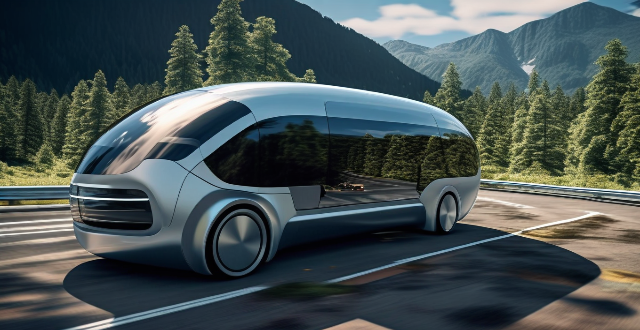The future of transportation is being shaped by several promising technologies, including electric vehicles, autonomous vehicles, hyperloop technology, flying cars and VTOL aircraft, maglev trains, and smart infrastructure. These advancements are expected to revolutionize the way we move around our cities, countries, and even the world.

The Most Promising Technologies for Future Transportation
The future of transportation is an exciting and rapidly evolving landscape, driven by advancements in technology that promise to revolutionize the way we move around our cities, countries, and even the world. Here are some of the most promising technologies that are expected to shape the future of transportation:
1. Electric Vehicles (EVs)
- Reduced Emissions: EVs produce zero tailpipe emissions, which significantly reduces air pollution.
- Energy Efficiency: Electric motors are more efficient than internal combustion engines, converting more energy into motion.
- Quiet Operation: EVs operate almost silently, reducing noise pollution in urban areas.
2. Autonomous Vehicles
- Increased Safety: Self-driving cars have the potential to reduce accidents caused by human error.
- Improved Mobility: Autonomous vehicles can provide transportation for elderly or disabled individuals who cannot drive.
- Traffic Management: AVs can communicate with each other and traffic infrastructure to optimize traffic flow and reduce congestion.
3. Hyperloop Technology
- High Speed: Hyperloop systems aim to transport passengers and cargo at speeds of up to 700 mph.
- Reduced Travel Time: Cross-country travel could be reduced to hours instead of days.
- Energy Efficient: Hyperloop pods float on a cushion of air, reducing friction and energy consumption.
4. Flying Cars and Vertical Takeoff and Landing (VTOL) Aircraft
- Urban Mobility: Flying cars could bypass ground-level traffic, offering a faster alternative for short distances.
- Emergency Response: VTOL aircraft can quickly reach remote or inaccessible areas for search and rescue operations.
- Personal Aviation: Personal VTOL aircraft could offer a convenient and fast mode of personal transportation.
5. Maglev Trains
- High Speed: Maglev trains can reach speeds of over 300 mph without the noise and vibration associated with traditional rail systems.
- Smooth Ride: The lack of wheels and tracks provides a smoother ride for passengers.
- Energy Efficient: Maglev trains use less energy per passenger mile compared to airplanes and cars.
6. Smart Infrastructure
- Traffic Optimization: Smart traffic lights and road sensors can adjust timing and routes based on real-time traffic conditions.
- Maintenance Alerts: Infrastructure equipped with sensors can alert maintenance crews to repair needs before they become major issues.
- Connected Vehicles: Vehicles communicating with smart infrastructure can receive updates on road conditions, construction, and accidents.
In conclusion, these technologies represent some of the most promising developments in the field of transportation. As they continue to mature and become more widespread, they will undoubtedly transform the way we live, work, and travel.